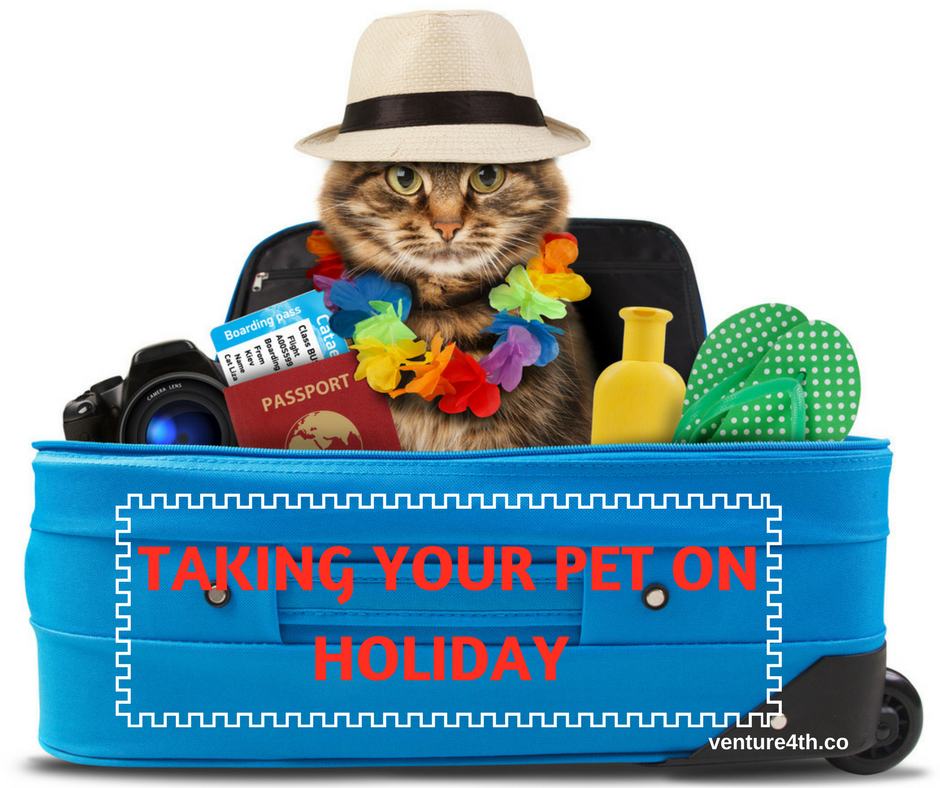Taking a family vacation isn’t just about travelling with your two-legged children anymore. According to various studies, more than half of pet owners in the United States now take their cats and dogs along with them when they go on vacation.
Whether you can’t find someone to watch over your beloved animal for a couple of weeks – or you can’t imagine spending more than a day without Fido by your side, there are plenty of ways you can adjust your travel needs to help your pooch or cat travel alongside you.
If you’re looking to take vacations with your furry friend, then we’ve got some tips for travelling with pets that you’re going to want to read up on before you go.
Road Trips with Your Pet
The easiest way to travel with a four-legged family member is probably car. This way, you don’t have to worry about fumbling with a carry case for your pet, a pile of luggage, and your waist security belt when it comes time to board a flight.
Still, that doesn’t mean that you shouldn’t plan ahead and take a few precautions if you’re thinking of heading out on a road trip with a cat or dog. Before you start figuring out the route for your next long journey, commit yourself to a trial run. In other words, take some shorter drives and look at how your pet responds. If your dog is constantly barking out of anxiety, or your cat is throwing up in his carry-case, then you might need to think of some better ways to calm him or her down.
Tips for Driving with Pets
Besides testing the waters in advance, there are a number of things that you should keep in mind if you want to keep you and your pet safe. Here are just a few of the best tips for travelling with pets we can find – when it comes to exploring the local roads.
- Make Sure to Buckle up. While you might like the idea of having your cat sitting on your lap, or your dog peering out of the window on the way to your destination – about 30,000 accidents happen on the roads each year because of unrestrained dogs. Pets wandering around the vehicle can be a distraction to drivers, and they’re more likely to be injured in an accident if unrestrained. When you’re strapping on your waist security belt, remember your pet’s security and restrain him with a pet seat belt, barrier, or travel crate.
- Be Prepared: Make sure that there’s a tag attached to your pet’s collar that contains crucial information such as your phone number, and the address of where you’ll be staying during your trip. It’s also worth bringing medical records with you in case your pet falls sick during your journey and needs to be taken to an emergency vet.
- Take regular breaks: The American Veterinary Association suggests that pet owners should stop driving every two or three hours to let their pet use the bathroom and run around for a little while. This will also be a good time to ensure your pet remains well hydrated with some cool water.
- Keep Heads and Paws Inside the Vehicle: As much as your dog might love hanging his head out of the car window – this could easily cause damage to his ears or expose your pooch to infections. Keep them inside the vehicle except for during rest-stops.
Flying with Your Furry Friend
If the only way to get to your chosen destination is by flight, then you’re going to have even more concerns to think about when taking a pet along for the ride. Remember that if your pet is either very old, very young, or not in the best health, it’s probably a good idea to leave them at home. Also, keep in mind that certain breeds with breathing difficulties will not travel well in the cargo space of airplanes – which is why many lines won’t allow such breeds to fly.
If you need to resort to flights for your pet, then consider an airline designed specifically for that purpose. For instance, Pet Airways offers climate-controlled cabins where a flight attendant will check on your friend once every fifteen minutes.
Tips for Flying with Pets
The best tips for travelling with pets involve doing your research and being prepared. If you’re flying with your furry pal, then remember the following suggestions:
- Research regulations and fees that surround flying with an animal. You’ll need to find out whether your pet is going to fly in the cabin or move through transit as “checked baggage”. It’s also worth looking into the history an airline has with pets, to find out if they have issues with pets being lost, getting injured, or even dying during a flight.
- Prepare your carrier. Once you have the regulations down, you’ll need to prepare your pet’s home for the course of their trip. Be sure that you purchase a kennel or carrier that has enough room for your pet to stand, turn around, and stretch out without hitting their head. The last thing you want is for your pet to be cooped up for hours at a time.
- Give him some exercise: Before the flight, make sure that you spend an hour playing with your cat or taking your dog for a walk. This will help to tire them out and increase their chances of sleeping through the majority of the trip.
Additional Tips for Travelling with Pets
No matter whether you’re travelling by plane or car, there are a few points you should always keep in mind if you’re taking your pet with you on a journey. For instance, you should always consult a vet before going on a trip – particularly if your pet has health concerns. At the same time, you should consider keeping a favorite toy or blanket with your dog or cat during their journey to help them feel more relaxed and comfortable.
What’s more, it’s a good idea to ensure you’re booking your stay at pet-friendly hotels where you’re free to hang out with your feline friend or canine companion during the course of your vacation.




